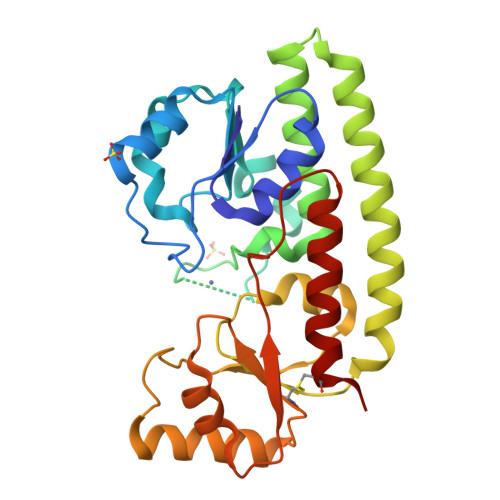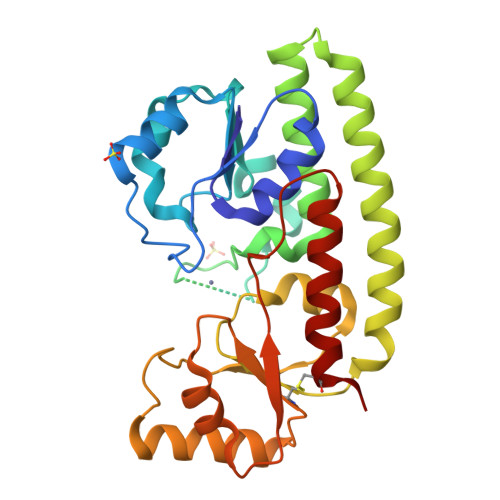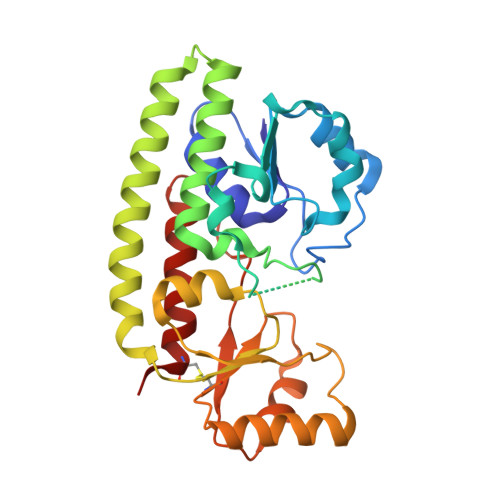The X-Ray Structure of the Zinc Transporter Znua from Salmonella Enterica Discloses a Unique Triad of Zinc Coordinating Histidines.
Ilari, A., Alaleona, F., Petrarca, P., Battistoni, A., Chiancone, E.(2011) J Mol Biology 409: 630
- PubMed: 21530543
- DOI: https://doi.org/10.1016/j.jmb.2011.04.036
- Primary Citation of Related Structures:
2XH8, 2XQV, 2XY4 - PubMed Abstract:
ZnuA is the soluble component of the high-affinity ZnuABC zinc transporter belonging to the cluster 9 group of ATP-binding cassette-type periplasmic Zn- and Mn-binding proteins. In Gram-negative bacteria, the ZnuABC system is essential for zinc uptake and homeostasis and is an important determinant of bacterial resistance to the host defense mechanisms. The cluster 9 members share a two (α/β)(4) domain architecture with a long α-helix connecting the two domains. In the Zn-specific proteins, the so-called α3c and the α4 helices are separated by an insert of variable length, rich in histidine and negatively charged residues. This distinctive His-rich loop is proposed to play a role in the management of zinc also due to its location at the entrance of the metal binding site located at the domain interface. The known Synechocystis 6803 and Escherichia coli ZnuA structures show the same metal coordination involving three conserved histidines and a glutamic acid or a water molecule as fourth ligand. The structures of Salmonella enterica ZnuA, with a partially or fully occupied zinc binding site, and of a deletion mutant missing a large part of the His-rich loop revealed unexpected differences in the metal-coordinating ligands, as histidine 140 from the mobile (at the C-terminal) part of the loop substitutes the conserved histidine 60. This unforeseen coordination is rendered possible by the "open conformation" of the two domains. The possible structural determinants of these peculiarities and their functional relevance are discussed.
Organizational Affiliation:
CNR Institute of Molecular Biology and Pathology and Department of Biochemical Sciences, Sapienza University of Rome, Piazzale Aldo Moro 5, 00185 Rome, Italy.




















